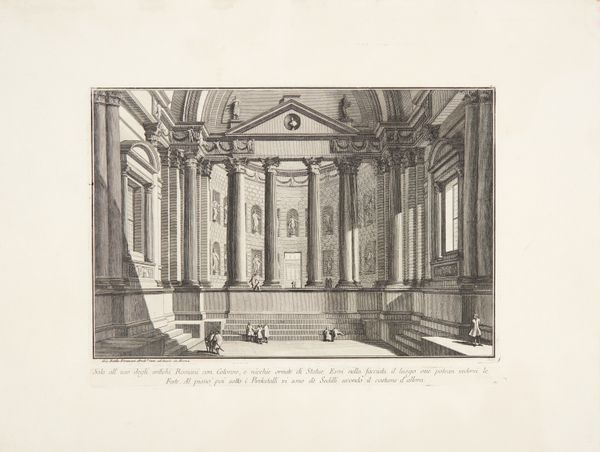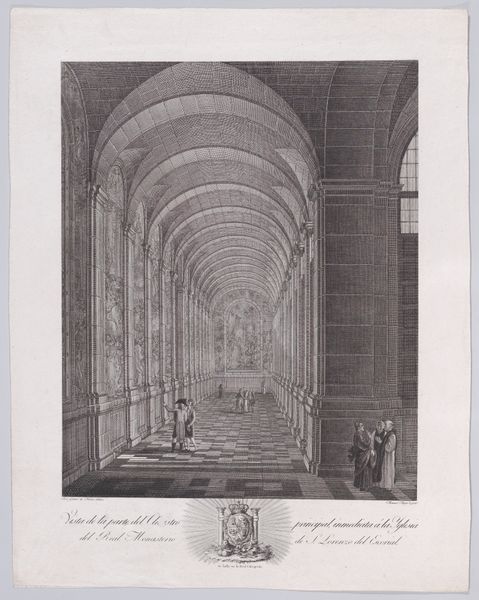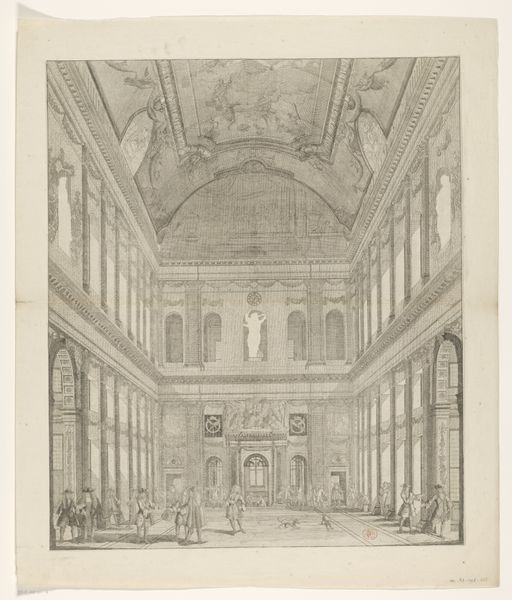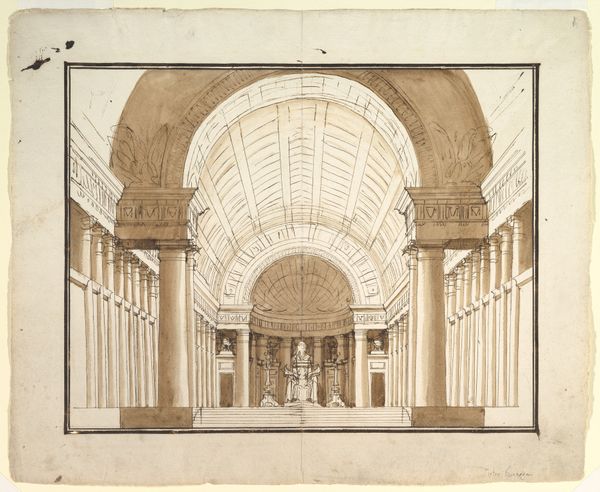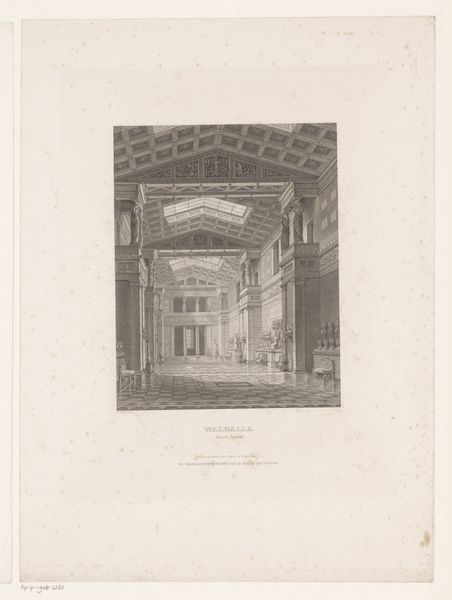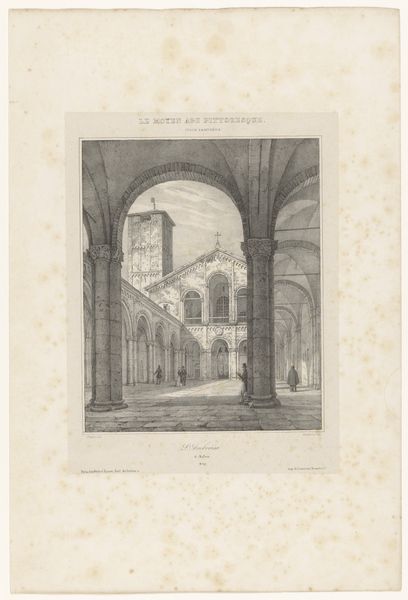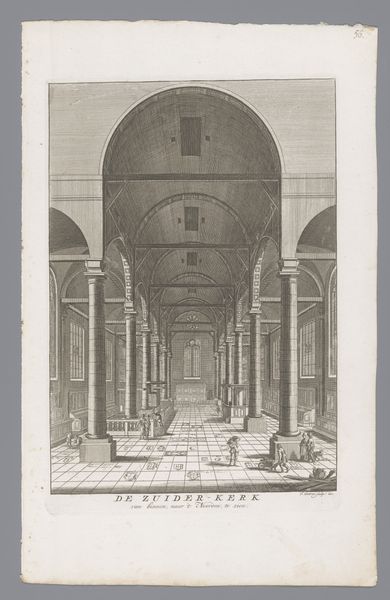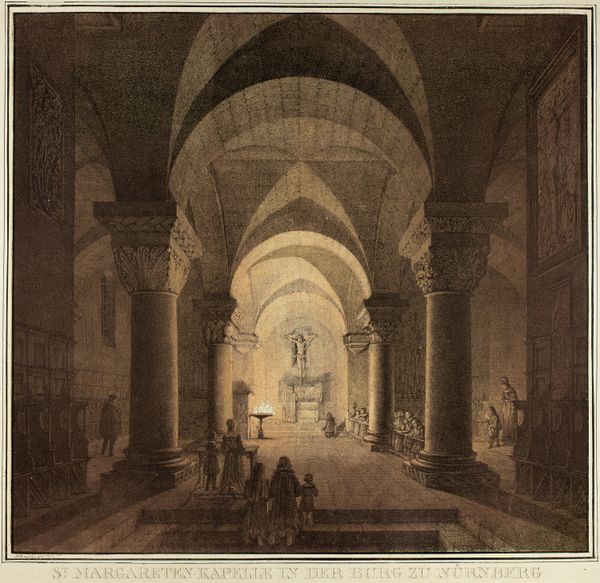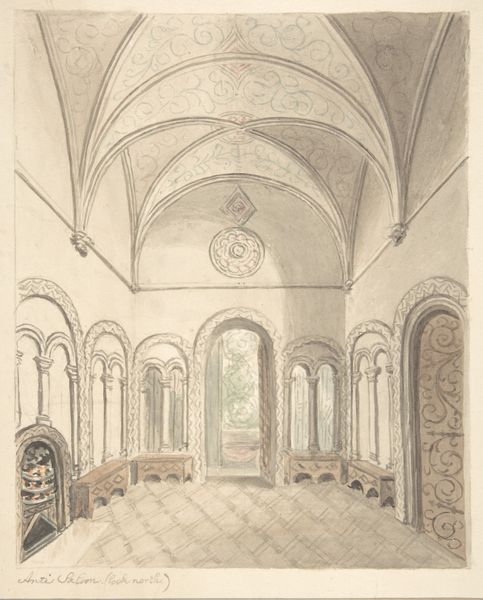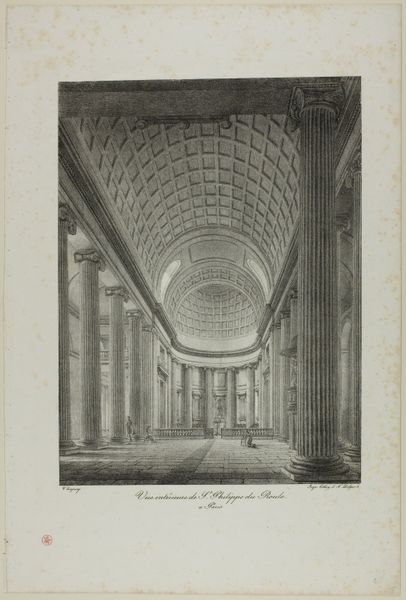
Egyptian Hall, Mansion House, London 1795 - 1825
0:00
0:00
drawing, print, watercolor, architecture
#
drawing
#
neoclacissism
#
water colours
# print
#
house
#
watercolor
#
column
#
cityscape
#
watercolor
#
architecture
Dimensions: sheet: 5 11/16 x 5 1/8 in. (14.5 x 13 cm)
Copyright: Public Domain
Curator: This delicate watercolor is a print called "Egyptian Hall, Mansion House, London," created by Auguste Charles Pugin between 1795 and 1825. It's currently held at the Metropolitan Museum of Art. Editor: It’s stunning! The use of watercolor gives it an airy, almost dreamlike quality, despite the rigid architectural subject matter. The composition draws your eye straight down that corridor of imposing columns. Curator: Indeed. The rows of Corinthian columns evoke a sense of power and formality, but there's a playfulness too. Think about the choice of the title “Egyptian Hall,” when it evokes ancient Greece and Rome more readily. Perhaps it represents a confluence of cultural aspirations prevalent during that era. Editor: Right! It makes sense, since it's labeled as part of the Neoclassical movement, which reveled in idealizing forms of the ancient world. Speaking of which, I want to come back to the technique. The washes of color and light really emphasize the sheer volume of the hall, playing with recession, with such precision. You also see touches of daily life that brings scale to it. Curator: And doesn't it remind you of stagecraft and the theatrical use of space. This hall becomes an allegorical stage set for civic duty. Pugin suggests an attempt to emulate the grandeur of past civilizations in service of contemporary London’s evolving identity. Editor: Absolutely, the architecture acting as a constant reinscription of authority! But there is a kind of contradiction in watercolor – such a delicate, translucent medium – portraying something so monumental. Curator: A fascinating contrast. He used a fleeting medium to depict what they hoped would become timeless statements of authority and cultural connection. Editor: Pugin’s piece offers a reminder that these grand architectural statements are also just impressions on paper, filtered through artistic interpretation. Curator: Precisely. It provokes questions about how cultures selectively remember and recreate past symbols for present ambitions.
Comments
No comments
Be the first to comment and join the conversation on the ultimate creative platform.
